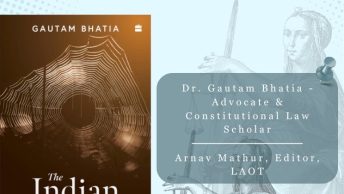The Indian Supreme Court by the Numbers
I released a paper today with Azim Premji’s Law, Governance, and Development Initiative entitled “The Indian Supreme Court by the Numbers.” It can be downloaded here or here. I have been collecting data about the Supreme Court for a number of years now and I wanted to finally get a report out that not only analyzes the data, but also discusses some of the current limitations of the Supreme Court’s data and how it might be improved. Some of the findings I think are interesting to a general audience and the Times of India has already reported on some aspects of the report. In particular, the high appeal rate to the Supreme Court from states that are closer to Delhi and wealthier is striking. So is the disproportionate growth of the Supreme Court’s workload compared to the High Courts and lower courts. The statistics that break down the Court’s caseload by subject category may also be interesting to many Court watchers. Most of all, I hope this paper is just a beginning and, that over the years, scholars can collect more data about the Court and that the Court can improve its data. There is still much we don’t know about the dynamics of the Supreme Court’s workload. Statistical data can’t provide us with a complete picture, but it’s a good place to start.
Subscribe
Login
0 Comments





